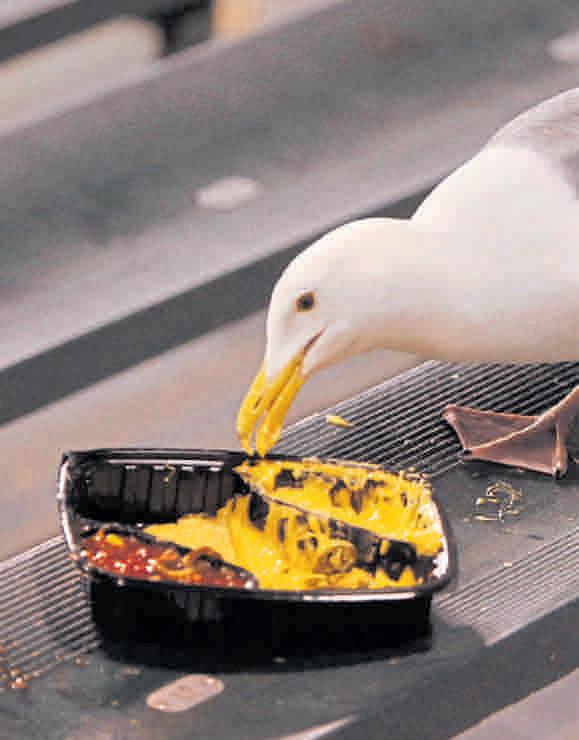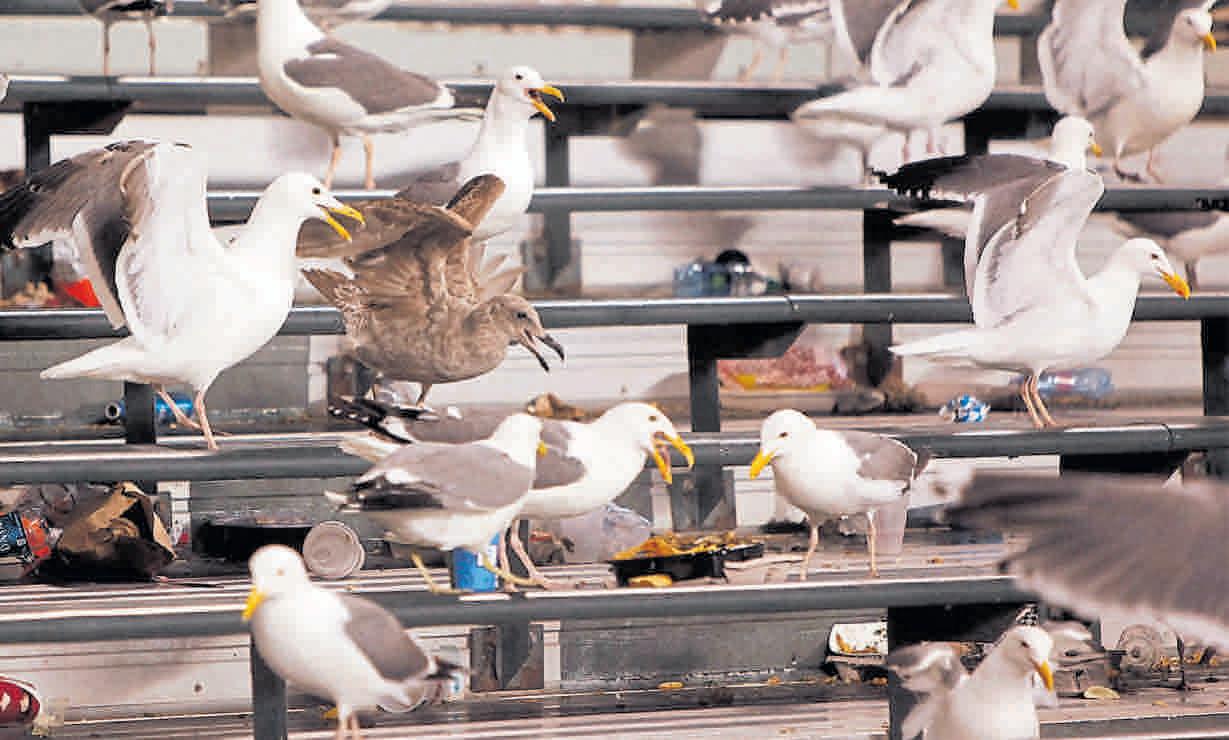
3 minute read
Savvy scavengers from the skies
Why
BY JOAN MORRIS
The first ones float in slowly, silently, unobserved by most. They circle high above, watching, waiting and then glide in o the horizon to perch on upper railings and light standards, becoming ghostly sentinels.
The crowd of baseball fans, intent on watching the opening innings of a game, are unlikely to notice the unusual visitors until, like a fury unleashed in the eighth inning, the skies fill with large and loud white-winged Valkyries, gleaming in the sun or luminescent in the lights that illuminate the night.
The gulls have come. And they’ve come for your garlic fries.
No one quite seems to know for certain why gulls — Western and California gulls, mostly — seem to know the Giants and A’s schedules nor why they show up en masse around the eighth inning. Is it the sounds, the smells, dumb luck?
“Gulls are pretty smart and underappreciated,” says Scott Sha er, a San Jose State University biologist who spends a lot of time with gulls. “They do a lot of interesting things besides pooping on cars and stealing food. If people could see what I see, they’d have a di erent view of gulls.”
Sha er’s view includes sneaking up on gulls on the Farallon Islands to slip tiny GPS trackers on them. Because gulls remember and recognize faces and distinctive clothing, Sha er has to wear disguises so the gulls won’t realize it’s “that guy” again.
Sha er then tracks the gulls as they fly about. He does other testing, too, that is not so savory, such as collecting their vomit to see what they’re eating, all in the name of research.
The most amazing thing Sha er has observed was a gull that seemed to travel at highway speeds, following a roadway from Berkeley to a recycling center in the Central Valley. He quickly figured out the bird had inadvertently hitched a ride on a recycling truck.
At least he thought it was inadvertent, until the gull, which had flown back to Berkeley the next day at a more gull-like pace and route, did the same thing again. Scary smart.
Theories abound about why the birds visit Bay Area ballparks, showing up for day and night games alike, and always around the same time in the game, no matter how slow play has been or how many extra innings it goes into. A common taunt aimed at pitchers taking too long between pitches: Hurry up, the gulls are waiting.


The reverse is also curious. The gulls don’t bother with stadiums in the o season or when the home team is away, AND they skipped it altogether last season when the stands were filled with cardboard cutouts.
Food, obviously, is a big draw, but how do they know exactly when to come?
Sha er thinks the gulls are probably attracted by the crowds. The gulls likely have a few scouts — the early birds, if you will — that keep an eye on the stadiums for signs of activity. The birds have learned that the stadiums put out an extensive bu et. If they see activity, the scouts communicate to other gulls that the table is being set.
Gulls aren’t shy about swooping in to take food, but they seem to wait for the eighth inning.

Walnut Creek pediatrician Joanna Chin and her husband, attorney Byron Chin, describe themselves as gull hobbyists. Part of a volunteer group working to save Heermann’s gulls in Baja California, the Chins love gulls almost as much as they love the Giants — so a trip to the ballpark is a double joy for them.
Their theory on the gulls’ eighth inning arrival: The birds have learned that the music played during the seventh-inning stretch is akin to a dinner bell, and the thinning crowd toward the end of the game gives the gulls more wing room to operate.

Convinced that the Giants have the game well in hand (or irretrievably lost), fans head for the exit in an attempt to beat tra c. The smaller crowds mean less interference for the gulls, who swoop down to the bleachers, then make their way around and down to the field level sections to scarf down the snacks left behind. Garlic fries, hot dog remnants, spilled popcorn, even bright orange nacho cheese — the gulls attack it with glee.
Gulls aren’t the only scavenging birds that visit ballparks, but they are perhaps the largest, loudest and most noticeable, and they show up in greater numbers, estimated in the thousands.

The Chins are excited to take their 2-year-old daughter to her first Giants game this year, where they’ll teach her about strikes and foul balls, base hits and home runs and, of course, the gulls.
Sha er, a San Diego native and a Padres fan, probably won’t attend any games this season. Neither will the gulls he tracks on the Farallons, which have never made an appearance at either stadium.
Well, there’s no telling when it comes to team loyalty.











